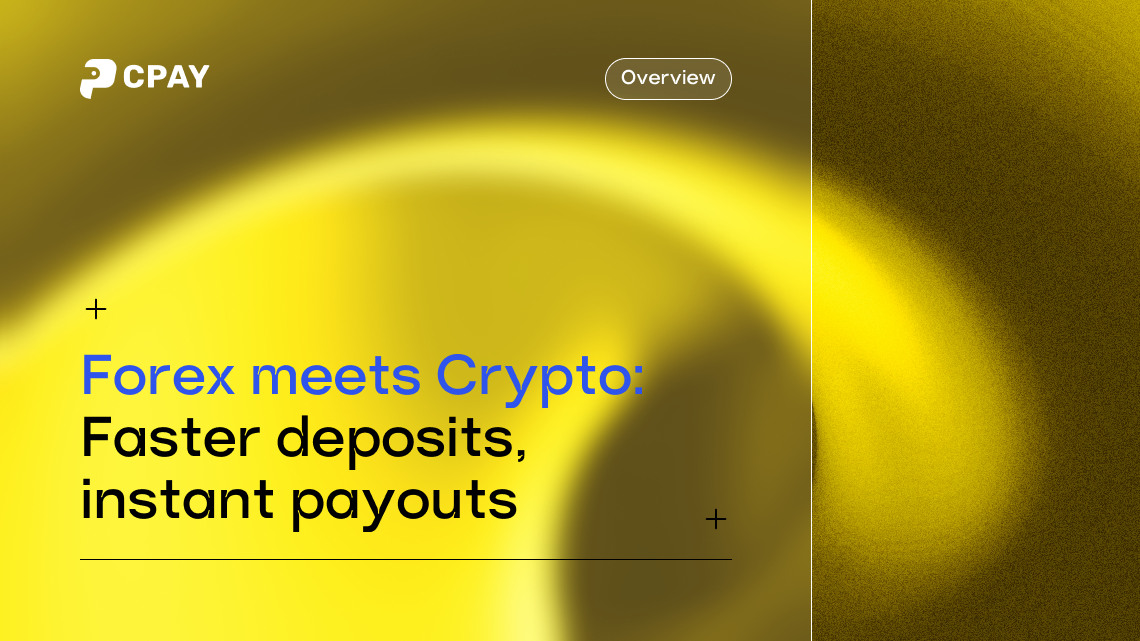The Forex industry has always been about speed, access, and liquidity. Traders want to move capital instantly between brokers, avoid delays, and manage risk across volatile markets. Yet traditional payment rails - bank wires, cards, e-wallets - are slow, expensive, and often restricted by geography or regulation.
That’s why an increasing number of Forex brokers are adopting crypto payments, especially stablecoins like USDT and USDC, alongside Bitcoin, Ethereum, and other digital assets. The shift is not just about “being modern” - it’s a way to win more clients, increase deposits, and reduce operational costs.
Why Stablecoins Fit the Forex Model
- Instant settlement
With stablecoins, a trader in Asia can deposit USDT into their account in seconds - no waiting days for an international wire. This speed lets brokers capture deposit intent immediately, reducing the chance that a client changes their mind or switches to a competitor. - Borderless access
Forex is global, but fiat payments are fragmented. Cards don’t always work cross-border, and local banks may block transfers to brokers. Stablecoins solve this problem: they work the same way everywhere. - Reduced volatility risk
Unlike BTC or ETH, stablecoins track fiat currencies like USD. A trader can keep funds in USDT without worrying that market swings will eat into their trading capital before they even place an order.
Benefits for Brokers
- Lower fees
Bank wires and card processing can eat into broker margins. By contrast, sending USDT on TRON or similar networks costs cents. With optimized routing, brokers can cut payment overhead by up to 50%. - Bigger deposits, faster withdrawals
When clients know they can deposit and withdraw instantly, they’re more likely to move larger amounts. Quick payouts also build trust, reducing churn and increasing lifetime value. - Access to new markets
Crypto adoption is highest in regions where Forex trading is booming — Southeast Asia, Africa, and Latin America. Offering stablecoin deposits can make a broker the first choice in these high-growth regions. - Improved retention
For many traders, speed of withdrawals is a dealbreaker. A broker who can pay out in USDT within minutes has a clear competitive edge over one stuck in banking delays.
Risks and Compliance
Of course, adopting crypto doesn’t mean ignoring regulations. Brokers must:
- Integrate KYC/AML checks into crypto flows to stay compliant with regulators.
- Choose secure custody solutions - either self-custody wallets or regulated payment providers.
- Stay ahead of regulations like MiCA in Europe or Travel Rule frameworks, which increasingly cover crypto transactions.
Handled properly, these measures turn crypto payments from a risk into a trust signal.
The Competitive Edge
In today’s market, traders compare brokers not only on spreads and leverage but also on how easy it is to move money in and out. A broker who supports card payments, bank wires, and crypto deposits covers all bases - but the crypto option increasingly makes the difference.
Stablecoins like USDT have already become the backbone of global crypto trading. Bringing them into Forex payments is a natural extension. For brokers, it’s not about “if” but “when.”
The result? Faster client acquisition, higher retention, lower costs - and a brand that positions itself as forward-looking in a hyper-competitive industry.








